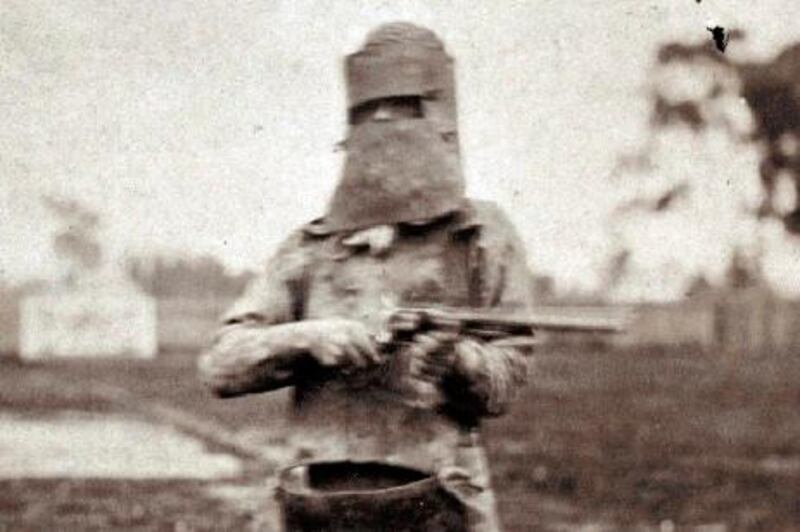SYDNEY // The skeleton of Australia's most notorious criminal will finally be returned to his descendants 132 years after he was executed, government officials said today.
The decision ends the family's long quest to find and properly bury the remains of a man many Australians now consider a folk hero.
Ned Kelly, who led a gang of bank robbers in Australia's Victoria state in the 19th century, was hanged in 1880, but for decades the whereabouts of his corpse was unknown. Last year, forensic scientists identified Kelly's nearly headless skeleton after it was found in a mass grave outside a now-closed prison. Most of Kelly's skull, which was stolen long ago, is still missing.
A battle over what to do with his bones ensued. The property developer of the former Pentridge Prison site where Kelly's skeleton was buried had hoped to keep the remains on the grounds. Kelly's descendants wanted the skeleton returned to them, so they could farewell the outlaw with a private burial.
Victoria Attorney General Robert Clark said that the remains would be turned over to Kelly's family.
Ellen Hollow, great-granddaughter of Ned Kelly's sister Kate Kelly, welcomed the decision.
"The Kelly family will now make arrangements for Ned's final burial," she said. "We also appeal to the person who has the skull in their possession to return it to [forensic officials], so that when the time comes for Ned to be laid to rest his remains can be complete."
Leigh Chiavaroli, the developer of the Pentridge site, declined to comment on the government's decision.
Kelly, whose father was an Irish convict, led a gang that robbed banks and killed policemen from 1878-80. These days, many Australians view him as a Robin Hood-like character who fought the British colonial authorities and championed the rural Irish underclass. Others dismiss him as a cold-blooded police killer.
After Kelly was executed, his body was buried in an unmarked grave outside a former prison called the Old Melbourne Gaol. But officials decided to exhume his remains along with those of other executed convicts in 1929 when the jail closed.
The plan was to move the skeletons to the nearby Pentridge Prison, but a mob of onlookers stole some of the remains - including what was believed to be Kelly's skull - during the exhumation.
The skull was later recovered and put on display at the Old Melbourne Gaol, now a historic site. But in 1978, it was stolen again.
In 2009, a farmer handed the Victorian Institute of Forensic Medicine a skull he claimed was Kelly's. Forensic tests last year, however, determined it was not the outlaw's skull.





